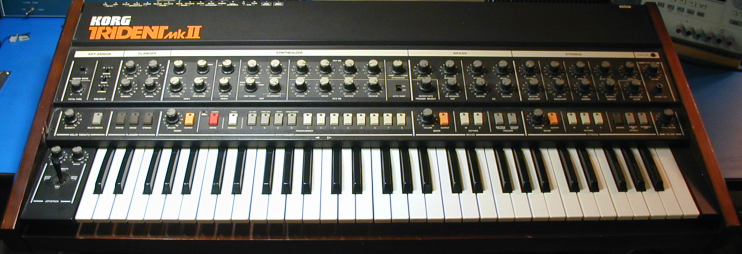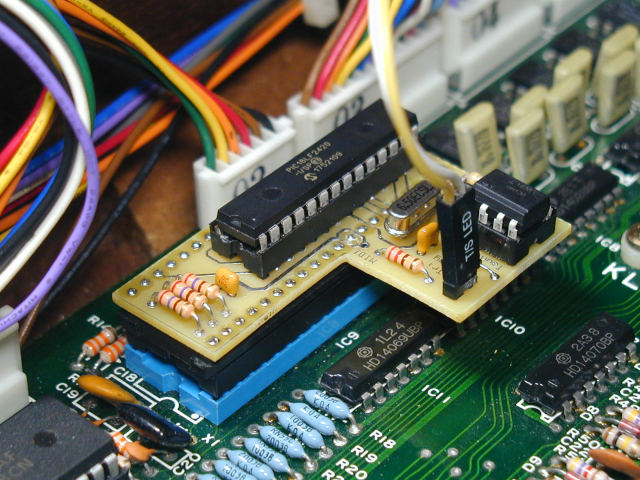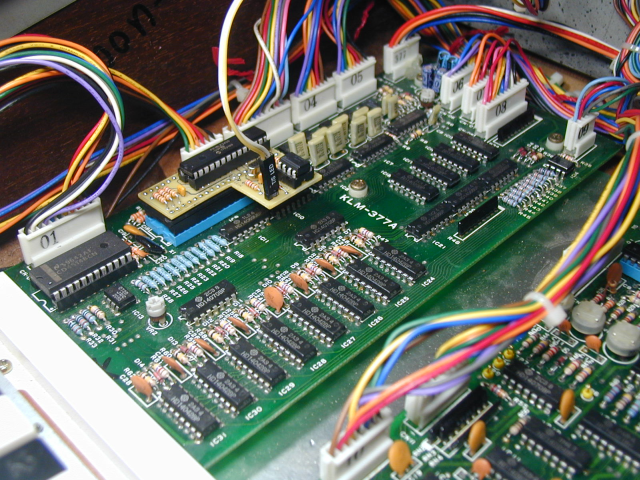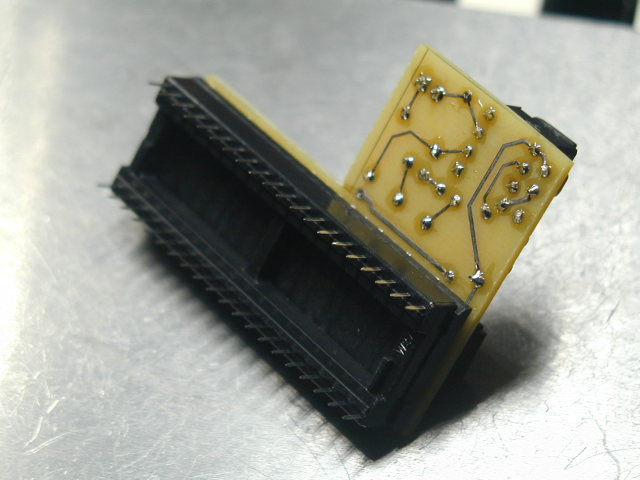MIDI Key Assigner Replacement for Korg Trident

Someone recently asked me if it was possible to make a MIDI-capable key assigner replacement for the Korg Trident, similar to the ones I had designed for the PolySix and Poly61 synths. Fortunately, I was able to borrow a Trident MK II, which made this project possible. The first step was to read out the internal firmware of the original 8048 MCU and understand how it worked. (The same "8048-203" key assigner MCU was used in both versions of the Trident) Next I designed a small board with a PIC microcontroller and a MIDI receive circuit. The PIC executes code 5-10 times faster than the original MCU, so in several places it was necessary to add delays to match the original chip's timing. Only Note On/Off, MIDI reset, and pitch bend messages are supported.
MIDI channel and OMNI mode, as well as a few other options, can be set by holding a key at power on. Settings are stored in EEPROM and are maintained when power is off.
The Trident uses a 6-bit DAC to generate key information for its oscillators. With six bits, there are 64 possible values, but since the Trident only has 61 keys, the top three values are never used. Since an external MIDI controller could have more than 61 keys, I implemented a user setting which allows using all 64 values. This allows playing 64 different notes when using an external keyboard, instead of the 61 that the Trident's keyboard can access. (The default configuration only uses 61 values)
MIDI notes and local keys can be played together. MIDI notes are sent to Synth/Brass/String based on the Trident key that they map to. (This routing is not implemented in the key assigner, and it knows nothing about it)
MIDI pitch bend is supported, although bending is in increments of semitones. There are four possible settings for bend range. MIDI bending affects both MIDI notes and local key notes.
Here is a photo of the new key assigner:

Here is another picture of how it looks installed in a Trident MK II:

The key assigner board was designed to have a 40-pin DIP header soldered to its underside, which would plug into the key assigner IC socket of the Trident. On the MK II, I felt there was too much friction when trying to plug the header into the particular IC socket Korg used, so I plugged the header pins into a different 40-pin IC socket. The IC socket has much thinner pins than the header, which plug easily into the IC socket used in the Trident. Here is how that looks:

You can't see the DIP header pins in the photo. One person has already installed the key assigner in a Trident MK I without the extra IC socket. (The Trident MK I used a different style of IC socket for the key assigner MCU)
Here is a document that explains the different configuration options of the new key assigner.
Here is a schematic of the board, and here is a component placement diagram for it. Here is a parts list.
I am currently offering a bare PC board plus programmed PIC chip for $30 plus shipping. You can get the other parts at Digi-key or Mouser.
Please note: Taking a Trident apart and replacing chips must be done carefully, or damage to the synthesizer could result. It should only be attempted by someone familiar with this type of work. I will not be responsible for any damage to any instrument caused by either proper or improper use of the information offered here.